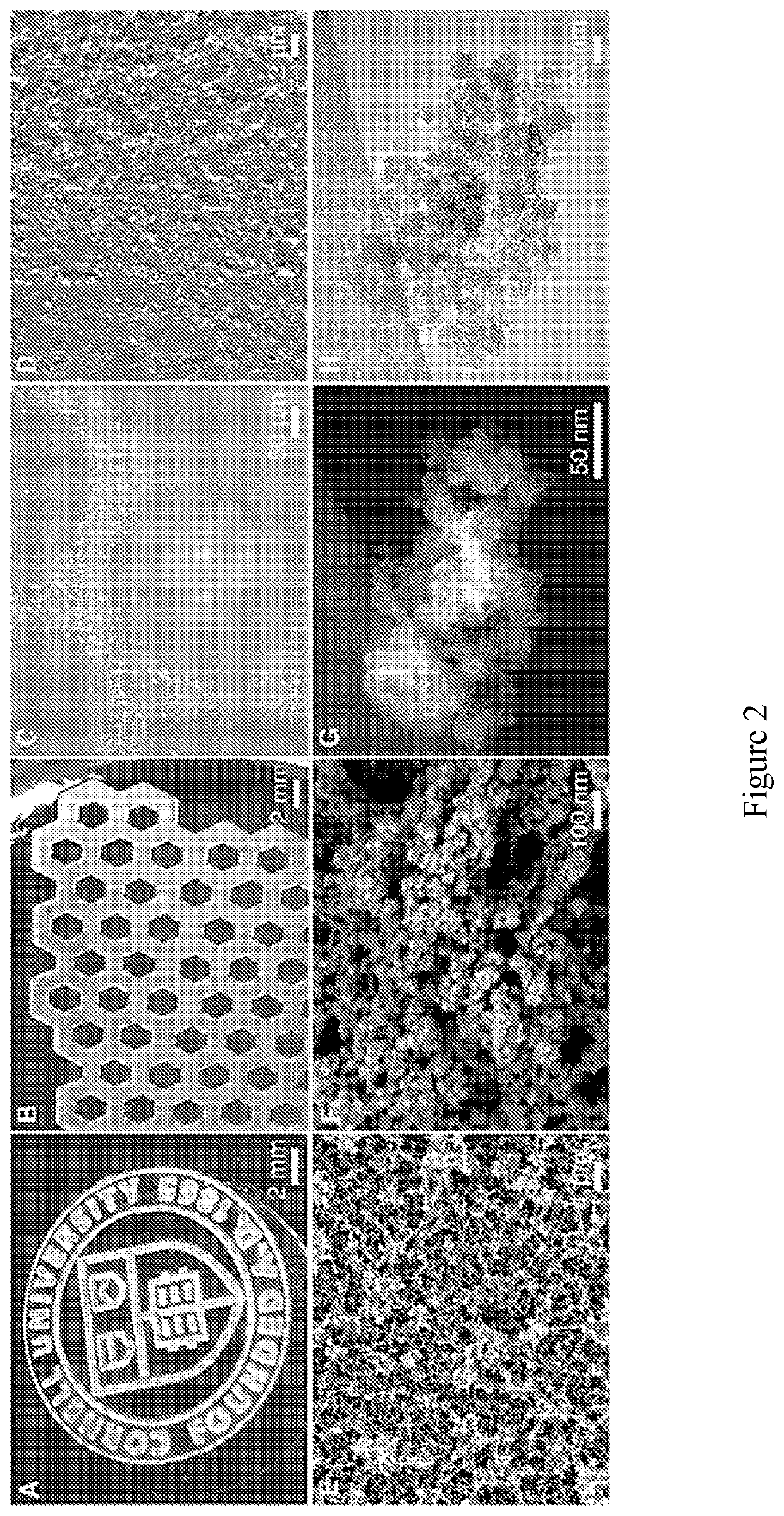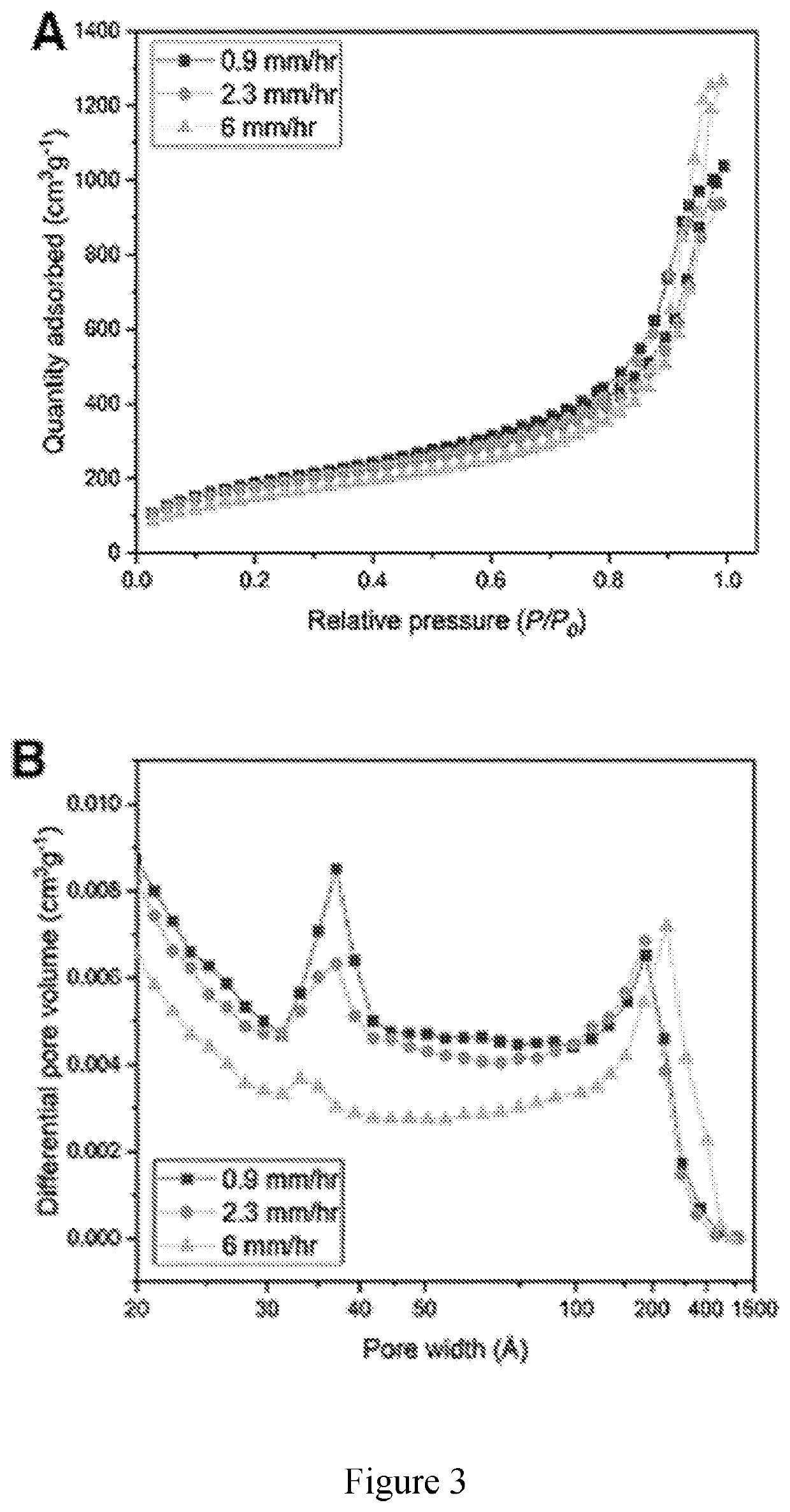Light patterning of inorganic materials
a technology of inorganic materials and light patterns, applied in the direction of additive manufacturing processes, polycrystalline material growth, crystal growth processes, etc., can solve the problems of inability to fabricate porous 3d structures from these building blocks, difficulty in achieving small pore size down to mesopore scale, and lack of common features
- Summary
- Abstract
- Description
- Claims
- Application Information
AI Technical Summary
Benefits of technology
Problems solved by technology
Method used
Image
Examples
example 1
[0094]The following example provides a description of compositions, methods, and articles of manufacture and uses thereof of the present disclosure.
[0095]In this example, three-dimensional printing of superstructures with multi-level porous networks starting from a specific photoresponsive building block defined by a zirconia core with 12 methacrylic acid ligands was demonstrated. It was demonstrated how the photoresin based on photoresponsive ligand on inorganic core enables a path towards a bottom-up route to program structure, composition and function. A 3D printed biomimetic artificial leaf with nature-comparable framework and functions such as carbon dioxide capture was demonstrated.
[0096]A new kind of photoresin based on photoresponsive building block defined by a zirconia core with 12 methacrylic acid ligands is introduced. FIG. 1 schematically illustrates how photoresponsive ligand on inorganic core (PLIC) chemistry can be applied in the fabrication of hierarchical porous ma...
example 2
[0122]The following example provides a description of compositions, methods, and articles of manufacture and uses thereof of the present disclosure.
[0123]Presented in this example are a class of building units, photoresponsive ligand on inorganic core (PLIC), to enable programming features and functions in extending length scale. The hypothesis is inherent properties from the inorganic core and organic ligand can be preserved if the combination on the molecular scale is considered. Taking nanoscale porosity, Zr6O4(OH)4(MAA)12 PLIC demonstrated formation of mesoporous materials in-situ during the process of connecting the building blocks into controlled shapes by UV light. This design harvest both superiorities of precise shape controlled from photopolymerization and atomically precise assembly from colloidal nanoclusters. Further, the programmability of functions and geometries were leveraged to fabricate bio-separation microfluidic devices. The designed mesoporous material was show...
example 3
[0147]The following example provides a description of compositions, methods, and articles of manufacture and uses thereof of the present disclosure.
[0148]Small molecule impurities, such as N-nitrosodimethylamine (NDMA), have infiltrated the generic drug industry. Described in this example is a solution that addresses these challenges by leveraging the assembly of atomically-precise building blocks into hierarchically porous structures. A bottom-up approach was introduced to form micropores, mesopores, and macroscopic superstructures simultaneously using functionalized oxozirconium clusters as building blocks. Further, photopolymerization was leveraged to design macroscopic flow structures to mitigate backpressure. Based on these multi-scale design principles, simple, inexpensive devices that are able to separate NDMA from contaminated drugs were engineered. Beyond this system, this design strategy is expected to open up hitherto nanomaterial superstructure fabrication for a range of...
PUM
| Property | Measurement | Unit |
|---|---|---|
| temperature | aaaaa | aaaaa |
| size | aaaaa | aaaaa |
| size | aaaaa | aaaaa |
Abstract
Description
Claims
Application Information
 Login to View More
Login to View More - R&D
- Intellectual Property
- Life Sciences
- Materials
- Tech Scout
- Unparalleled Data Quality
- Higher Quality Content
- 60% Fewer Hallucinations
Browse by: Latest US Patents, China's latest patents, Technical Efficacy Thesaurus, Application Domain, Technology Topic, Popular Technical Reports.
© 2025 PatSnap. All rights reserved.Legal|Privacy policy|Modern Slavery Act Transparency Statement|Sitemap|About US| Contact US: help@patsnap.com



